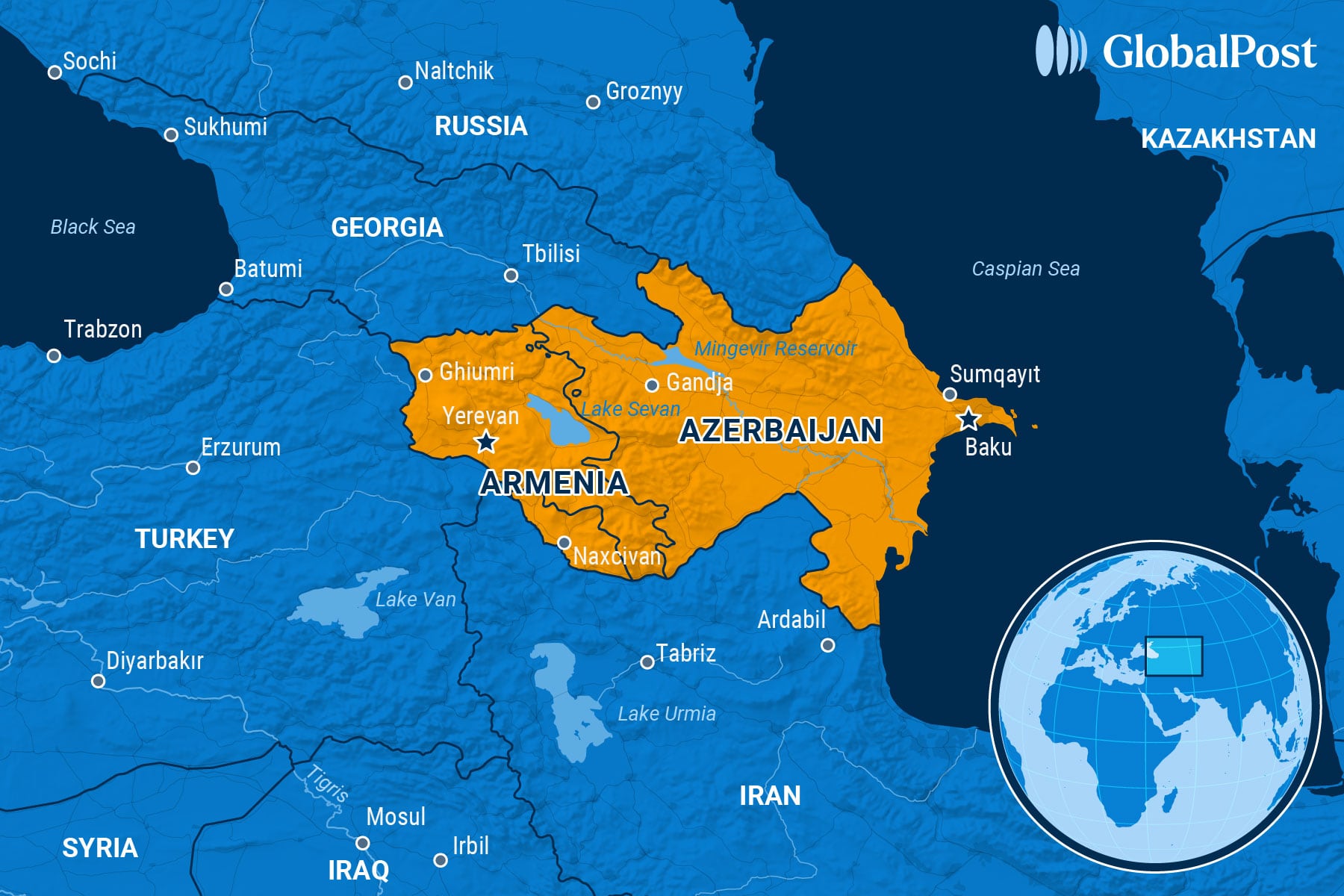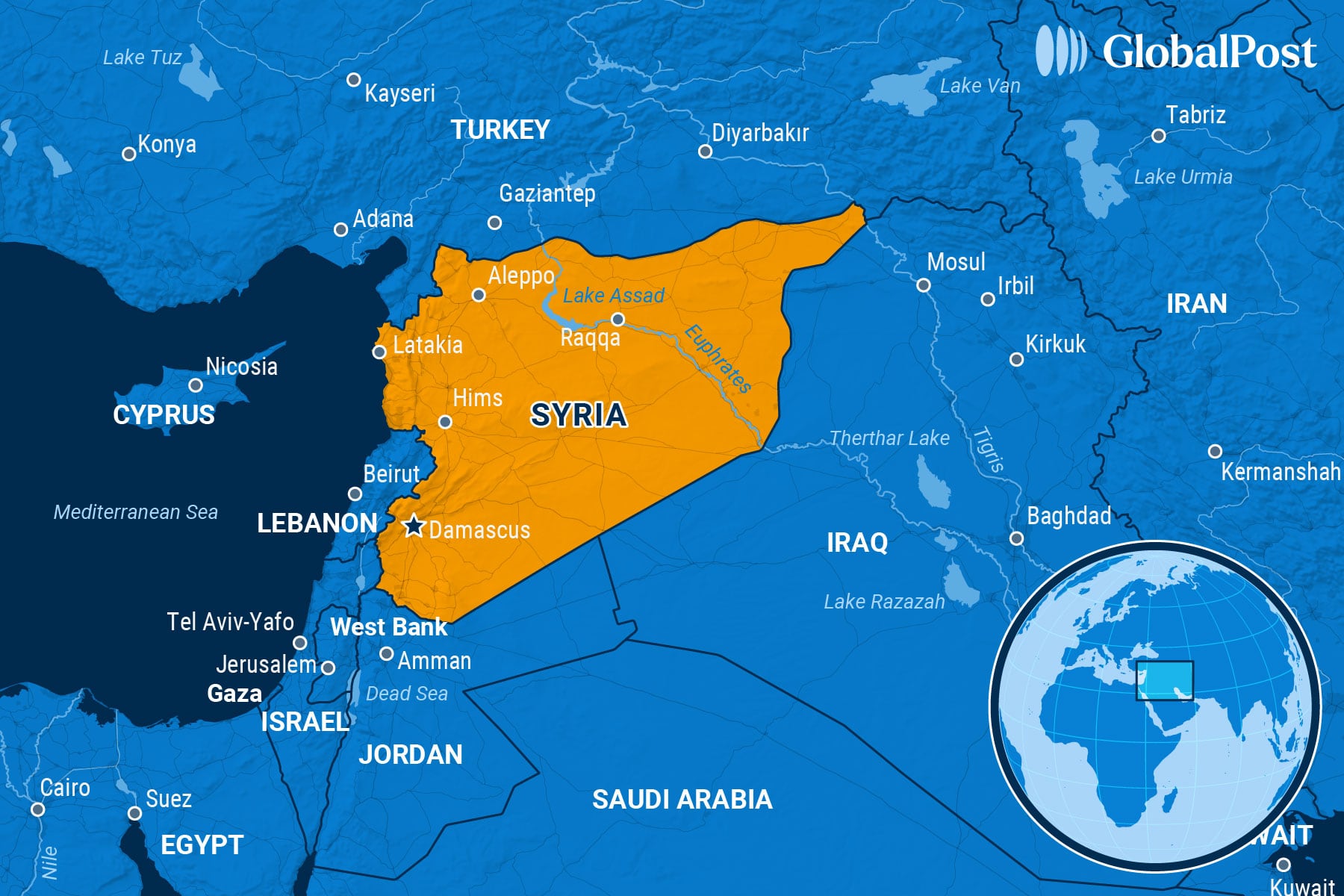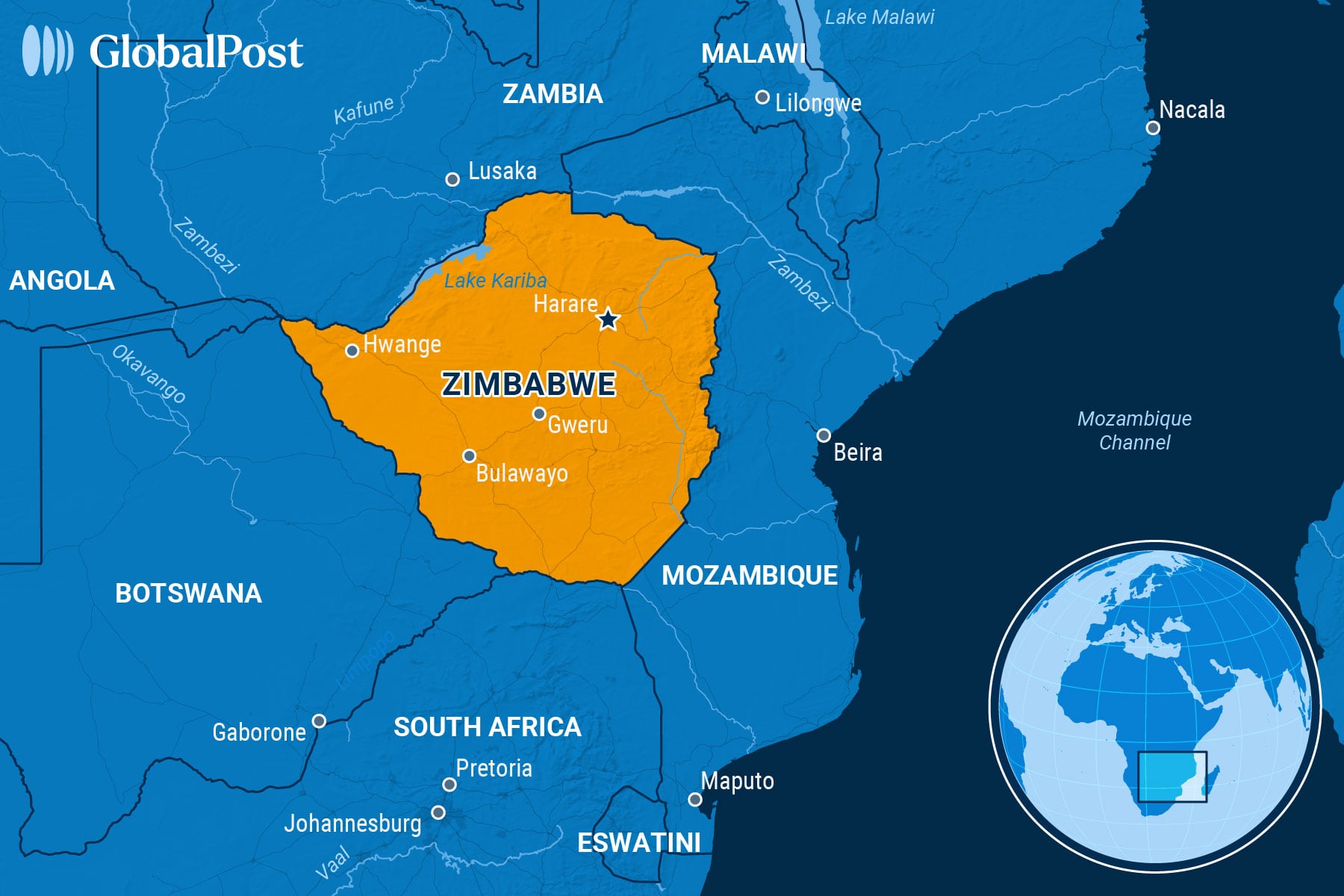Playing Coy: Armenia Wants Peace – Azerbaijan Doesn’t Mind Waiting
NEED TO KNOW
Playing Coy: Armenia Wants Peace – Azerbaijan Doesn’t Mind Waiting
ARMENIA/ AZERBAIJAN

In mid-March, Armenia and Azerbaijan did what many thought was impossible: They agreed on a draft of a peace treaty that would end a violent on-again, off-again war between the two that stretches back decades.
If it ends, it’s one of the few things that friends and enemies such as Azerbaijan, Armenia, the United States, the European Union, Iran, Turkey, Russia, and others in the South Caucasus could actually agree on – a peace would allow for economic development in the strategic region that would be beneficial far beyond the two countries’ borders.
But there is still a long way to go, say observers.
It’s “peace in principle, deadlock in practice,” wrote Cavid Veliyev of the Azerbaijan-based Center of Analysis of International Relations for Turkey’s newswire, the Anadolu Agency.
In the draft agreement, Armenian Prime Minister Nikol Pashinyan has recognized Azerbaijan’s sovereignty over the disputed region of Nagorno-Karabakh after three decades of Armenian separatist rule – a move seen as a crucial first step towards the normalization of relations, wrote the Guardian.
Last year, Armenia also returned to Azerbaijan four border villages it had seized decades earlier.
Still, there are issues before any treaty can be signed.
The next step would be for Armenia to remove claims to Azerbaijani territory from its constitution, which would require a referendum of the kind that the president called for in February. The problem is, there is no guarantee that Armenia’s voters would approve a constitutional change.
Also, Azerbaijan wants Armenia, as a precondition for signing the treaty, to agree to dissolve the Organisation for Security and Co-operation in Europe’s Minsk Group, an entity established in 1992 and led by the US, Russia, and France, to oversee the peace process. Azerbaijan sees it as biased toward Armenia.
Another sticking point is a desire by Azerbaijan for unhindered land access across Armenian territory connecting the Azerbaijani mainland to the Nakhchivan exclave.
Meanwhile, the agreement contained major concessions from Armenia, including the removal of EU monitors from the border and the dropping of lawsuits against Azerbaijan in international courts such as the International Court of Justice, Caucasus-based OC Media reported.
The conflict between the two nations dates back to the final years of the Soviet Union, when Armenia and Azerbaijan clashed over Nagorno-Karabakh, which demanded to be split off from Azerbaijan in 1988. It had an Armenian majority but had long been part of Azerbaijan. Since then, the two countries have fought two full-on wars, most recently in 2020. Meanwhile, a one-day military operation by Azerbaijan in 2023 ended in a decisive victory for that country, which reclaimed most of the territory it wanted. It also led to the exodus of 100,000 ethnic Armenians out of Nagorno-Karabakh.
The peace treaty had been in the works since 2020 as part of a Russia-brokered ceasefire ending the war that year. But after Azerbaijan defeated Armenia in 2023, Armenians decided they wanted peace –they had lost all of the territory they had taken from Azerbaijan decades earlier and worried they may lose more, maybe even their country.
“The wars also upended the regional order, cementing a decade-long shift in the balance of power that is now overwhelmingly in (Azerbaijan’s) favor,” wrote World Politics Review. “Given the lingering threats that Azerbaijan posed to Armenia – (Azerbaijan) had hinted at using force to seize a ‘corridor’ through Armenian territory to access an Azerbaijani exclave – (Armenia) effectively had no choice but to make concessions for a peace agreement.”
Still, since 2023, the Armenia-Azerbaijan border has effectively served as a front line, marked by trenches, hundreds of military positions, and thousands of soldiers stationed in rear bases, noted Civil Georgia. “While the situation is never completely calm, exchanges of fire occasionally escalate into full-scale clashes, often resulting in casualties among both soldiers and civilians.”
Meanwhile, Armenia is now trying to make powerful friends in the West to protect itself after its historical protector, Russia, failed to act in 2023, distracted by its war in Ukraine. Last week, for example, the Armenian parliament set the stage to apply for membership in the EU.
Even so, Russian influence remains strong in Armenia: The country is heavily dependent on Russian energy and trade and even hosts a Russian military base. There is concern, however, that Russia would sabotage the peace process if it ceases to be distracted by its war in Ukraine, mainly because peace would benefit Turkey – an ally of Azerbaijan but a neighbor of Armenia’s – and it has no interest in strengthening Turkey’s influence in the region.
Regardless, both Armenia and Azerbaijan are courting Russia again, wrote the Armenian Mirror Spectator.
“Long-time enemies Armenia and Azerbaijan are engaged in what could be described as a ‘rapprochement race,’ with each striving to repair strained ties with Russia,” wrote Eurasianet. “The mending of fences appears connected to maneuvering by Yerevan and Baku to gain advantages before the signing of a peace treaty.”
Still, a big reason that the peace has taken so long is that Armenia has been trying to get more concessions even as it risks more demands from the other side. Azerbaijan, however, sees it as just more stalling tactics. As one Western diplomat told Carnegia Politika: “Baku will not let anyone steal its victory.”
It’s piling on the pressure, too. For example, on the day that Armenia announced the draft treaty, Caliber.Az, a news outlet aligned with the Azerbaijani government, published a commentary accusing Armenia of preparing to launch a military offensive, which Armenia denied.
Still, most analysts believe Azerbaijan wants the treaty signed. Others say it’s important to get a peace signed as quickly as possible so there is no going backward.
“If those advocating for peace in the South Caucasus want to act, the time is now,” added Carnegie Politika. “The key pieces are in place. If Baku and Yerevan wait too long, they may squander one of the best opportunities for a settlement they have ever had – a misstep that would have grave consequences for the entire region.”

THE WORLD, BRIEFLY
Revenge Attacks in Syria Undermine New Government’s Promise of Peace
SYRIA

Reprisal attacks on the Alawite minority, who long ruled the country under former Syrian president Bashar al-Assad and his father, erupted again this week, with at least 10 civilians killed in two cities, undermining the peaceful coexistence the new government says it is aiming to achieve, the Associated Press reported.
On Monday, at least four civilians were killed in the Tartus province, a coastal region that is home to the Alawites.
A witness told the newswire that masked gunmen arrived in the village of Haref Nemra, looking for its leaders, before carrying out the killings that included three from the same family, one being a child.
Dozens of families fled the area after the attack to nearby mountains.
Security forces arrested two members of an armed faction active under the new transitional government’s Military Operations Administration, the central authority overseeing military and security matters after the fall of the Assad regime.
In another attack on Monday, two unknown gunmen killed six people in Homs, a diverse city in western Syria.
In the attack, an Alawite mother, three of her children, and two guests from the Sunni community were killed. The father of the children was seriously wounded.
Over the past few months, Syria’s Alawite community has been targeted by other Syrians, mainly in retribution for abuses by the former regime.
In early March, Islamist-led forces killed more than 1,000 civilians, mostly Alawites, in coordinated attacks on coastal areas, including Latakia and Baniyas. They carried out executions, burned homes, and caused mass displacement, according to the BBC.
The sectarian violence – the deadliest since Assad’s fall in December – was in retaliation for ambushes by armed Assad loyalists targeting the new government’s security forces along the coast.
Witnesses identified the attackers as hardline Sunni Islamists, including Syria-based jihadi foreign fighters and ex-members of Hayat Tahrir al-Sham, the Islamist rebel alliance that overthrew Assad and installed its leader Ahmad al-Sharaa as president.
The international community has urged Syria’s new government to protect minorities.

Germany’s Far-Right Party Dissolves Youth Branch to Avoid Ban
GERMANY

The extremist youth group affiliated with the German far-right party, the Alternative for Germany (AfD), opted to dissolve itself on Monday to preempt a possible ban that may damage the AfD as it prepares to become the country’s largest opposition party in the legislature, Politico reported.
The group, known as “Young Alternative,” was classified as a right-wing extremist group by Germany’s federal domestic intelligence service in 2023. Because of this classification, the group faced a potential ban under a German law that seeks to prevent a revival of the county’s Nazi past.
Both the AfD and the youth group were in favor of dissolving the organization, a move seen as an attempt to protect the AfD, analysts said.
A ban on Young Alternative would have directly impacted the AfD because of the organizational and personnel overlaps of the two organizations.
Many members of the now-dissolved group will join a new youth organization founded by the AfD that, unlike the Young Alternative, will be under the direct control of the party leadership to make it more difficult to ban.
The AfD, which came in second in February’s elections, was the second-most preferred party among voters aged 18 to 21.
Some German leaders have previously suggested banning the AfD itself – which is monitored as a “suspected” right-wing extremist organization by Germany’s federal domestic intelligence – but attempts in the past have faltered, according to Le Monde.
According to the German constitution, political parties that try to subvert democracy through democratic means are liable to be banned, but it has proven very difficult to do so. Still, two parties have been barred in (what was then) West Germany’s postwar period – the neofascist Socialist Reich Party in 1952 and the Communist Party of Germany in 1956. Two recent attempted bans on the neo-Nazi National Democratic Party (NPD) were unsuccessful.

Independence Veterans Pressure Zimbabwean President To Resign
ZIMBABWE

Police were on heightened alert and patrols in the country’s capital Harare and other cities this week, following calls by veterans for mass protests against President Emmerson Mnangagwa and his plans to extend his term in office until 2030, Reuters reported.
More than 95 people were arrested at demonstrations Monday and Tuesday with the streets in Harare and other cities otherwise quiet as many businesses and schools closed their doors, and traffic fell to a handful of vehicles.
Authorities reportedly fired tear gas at protesters, who were chanting “We reject 2030” – referring to plans by the ruling Zimbabwe African National Union – Patriotic Front (ZANU-PF) party to extend Mnangagwa’s presidential term.
Police officers patrolled the streets, with reports of small-scale demonstrations in parts of the capital. Authorities reportedly fired tear gas at protesters, who were chanting “We reject 2030” – referring to plans by the ruling Zimbabwe African National Union – Patriotic Front (ZANU-PF) party to extend Mnangagwa’s presidential term.
The demonstrations were led by veterans of the country’s war of independence, which ended in 1979, with protest leaders calling on Zimbabweans “not to be cowards,” added the BBC.
Veterans remain influential in ZANU-PF and initially supported Mnangagwa, who came to power in 2017 following a coup that ousted his former mentor, the longtime dictator Robert Mugabe.
But veterans have grown resentful of the president and accused him of attempting to cling to power. In January, ZANU-PF said it wanted to extend the incumbent’s term in office by two years until 2030.
Meanwhile, some veterans want Vice President Constantino Chiwenga to replace Mnangagwa. Chiwenga has not made any public comments about such calls. Meanwhile, officials have denied rumors of a dispute between the vice president and president.
Mnangagwa – whose final five-year term expires in 2028 – has repeatedly denied plans to prolong his presidency, although veterans claim that he is pursuing an extension through proxies.
Zimbabwe’s 2013 constitution limits presidents to two five-year terms.

DISCOVERIES
Icy Moon
There might be more ice on the Moon than previously thought.
A previous study had already proved the existence of water ice on the Moon. However, due to large variations in surface temperature, this was only the case close to the surface in the lunar polar regions.
Now, direct measurements taken by India’s Chandrayaan-3 Vikram lunar lander have likely confirmed the existence of ice a few centimeters beneath the satellite’s surface in regions away from the poles, Cosmos Magazine explained.
In a new study, researchers analyzed temperatures measured to a depth of about four inches beneath the surface using the ChaSte probe on board the Chandrayaan-3 Vikram.
The Chandrayaan-3 mission successfully landed on the lunar surface at 69 degrees south, the latitude that crosses Antarctica on Earth – a perfect location to study if water ice can exist away from the poles, researchers said.
At the landing point – consisting of “a Sun-facing slope angled at six degrees” – the researchers found the highest temperatures to be about 180 degrees Fahrenheit and the lowest about -274 degrees Fahrenheit at night.
Barely a meter away from the touching-down point – at a flat surface – the highest temperature was 140 degrees Fahrenheit.
Data collected by the lander was used to develop a model of how slope angle can affect temperatures at polar latitudes on the Moon.
The team found that if a slope is facing away from the Sun toward the Moon’s nearest pole and at an angle greater than 14 degrees, it might be cold enough for ice to accumulate closer to the surface.
High-latitude regions are easier to explore compared to those closer to the poles, and they might be the place to look to find water ice in future long-term, crewed missions that will rely on local sources of water.
“Water in liquid form cannot exist on the lunar surface because of (an) ultra-high vacuum,” said lead study author Durga Prasad Karanam in an interview with India’s Economic Times. “Therefore, ice cannot transform into liquid, but would rather sublimate to vapor form.”
Karanam suggested that with the current information available, it is unlikely that the Moon had habitable conditions in the past. But Karanam added that more data is needed to develop techniques to extract and use ice for habitability on the Moon.
